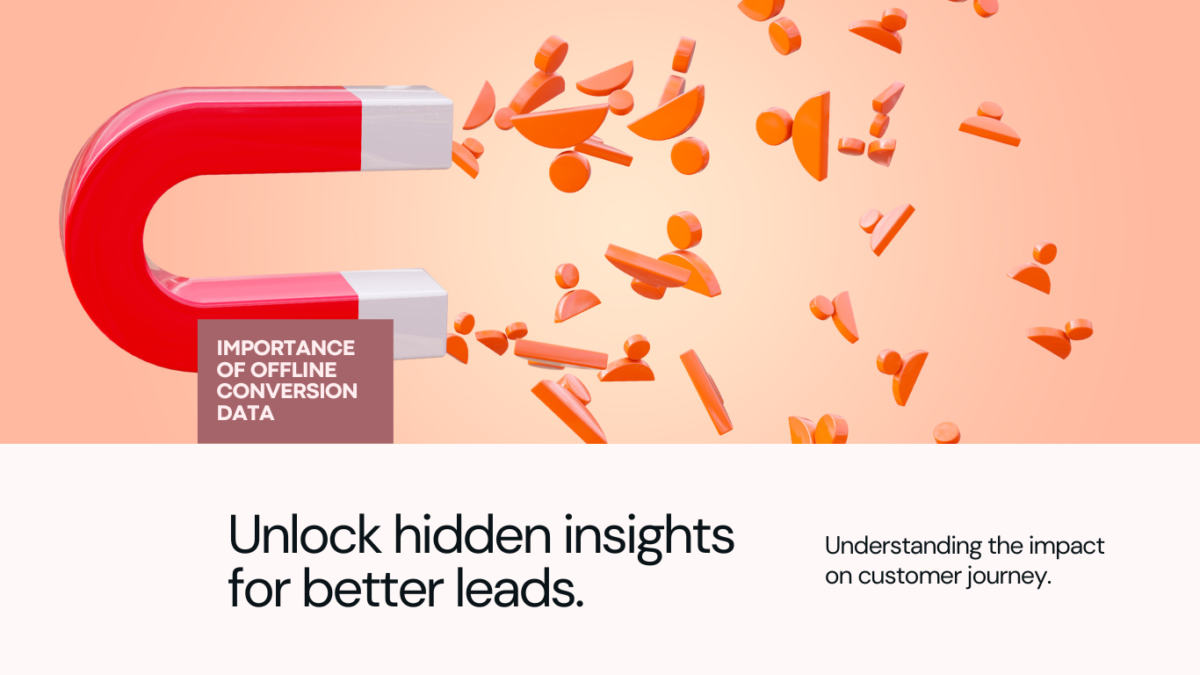In the digital age, online marketing strategies often steal the spotlight with their measurable metrics and real-time analytics. However, offline conversion data plays a crucial role in lead generation, offering invaluable insights and enhancing overall marketing effectiveness. Let's delve into why offline conversion data is essential and how it can supercharge your lead generation efforts! 🌟🔍
Understanding Offline Conversion Data
Offline conversion data refers to actions taken by leads or customers in the physical world that ultimately lead to a sale or desired outcome. This data includes phone calls, in-store visits, events attendance, direct mail responses, and more. While online interactions provide valuable data points, offline data completes the picture by bridging the gap between online engagement and real-world conversions. 🌐🛍️
The Importance of Offline Conversion Data in Lead Generation
Comprehensive Customer Journey Analysis:
By incorporating offline conversion data, marketers gain a holistic view of the customer journey. Research shows that 90% of customers use multiple channels to interact with a brand before making a purchase. Understanding offline touchpoints helps identify key conversion drivers and optimize marketing strategies accordingly. 🔄📈
Enhanced Targeting and Personalization:
Offline data enriches customer profiles, allowing for more personalized and targeted marketing campaigns. According to a study by Epsilon, 80% of consumers are more likely to make a purchase when brands offer personalized experiences. Utilizing offline data enables tailored messaging and offers based on individual preferences and behaviors. 💬🎯
Improved Attribution and ROI Measurement:
Attribution modeling becomes more accurate with offline conversion data, attributing conversions to the right channels and touchpoints. This leads to better ROI measurement and optimization of marketing spend. A study by Nielsen found that companies with accurate attribution models see a 15-30% increase in marketing ROI. 📊💰
Optimized Marketing Campaigns:
Incorporating offline data into lead generation strategies allows marketers to optimize campaigns for maximum impact. For example, a furniture retailer analyzes offline showroom visits data to identify top-performing geographic areas. By targeting digital ads to those regions, they achieve a 20% increase in online-to-offline conversions. 🌎🛋️
Real-World Example:
Let's consider a case study of a car dealership leveraging offline conversion data for lead generation: ● Offline Data: The dealership tracks phone inquiries, test drives, and showroom visits. ● Online Campaigns: They run targeted Facebook ads promoting test drive incentives. ● Results: By analyzing offline conversion data, they discover that 30% of test drives from Facebook ads lead to vehicle purchases. ● ROI Impact: This insight leads to a 25% increase in ad spend on Facebook, resulting in a 40% growth in qualified leads and a 15% boost in car sales.
Conclusion
Incorporating offline conversion data into lead generation strategies is not just beneficial; it's essential for maximizing marketing effectiveness and driving tangible results. From comprehensive customer journey analysis to enhanced targeting and optimized campaigns, offline data unlocks a world of opportunities for businesses. By leveraging both online and offline insights, marketers can create seamless and personalized experiences that resonate with their audience and drive conversions. 🚀🌟 So, don't overlook the power of offline conversion data in your lead generation efforts. Embrace the full spectrum of customer interactions, both online and offline, to unlock growth opportunities and achieve marketing success! 💪🔥
